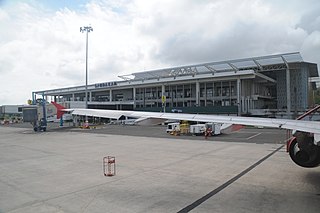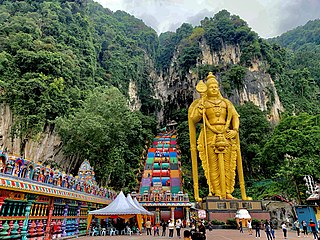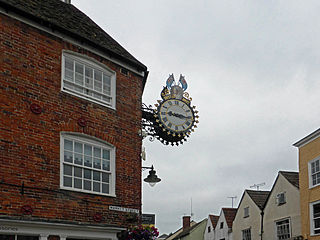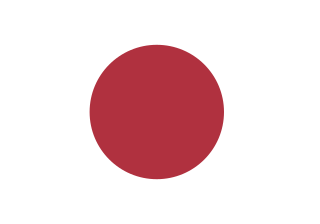
East Malaysia, or the Borneo States, also known as Malaysian Borneo, is the part of Malaysia on and near the island of Borneo, the world's third-largest island. East Malaysia comprises the states of Sabah, Sarawak, and the Federal Territory of Labuan. The small independent nation of Brunei comprises two enclaves in Sarawak. To the south and southeast is the Indonesian portion of Borneo, Kalimantan. East Malaysia lies to the east of Peninsular Malaysia, the part of the country on the Malay Peninsula. The two are separated by the South China Sea.

Kota Kinabalu, colloquially referred to as KK, is the state capital of Sabah, Malaysia. It is also the capital of the Kota Kinabalu District as well as the West Coast Division of Sabah. The city is located on the northwest coast of Borneo facing the South China Sea. The Tunku Abdul Rahman National Park lies to its west and Mount Kinabalu, which gave the city its name, is located to its east. Kota Kinabalu has a population of 452,058 according to the 2010 census; when the adjacent Penampang and Tuaran districts are included, the metro area has a combined population of 628,725. The 2020 Census revealed an increase in the municipal population to 500,421, while the wider area including the Penampang and Putatan districts had a population of 731,406.

Labuan, officially the Federal Territory of Labuan, is an island federal territory of Malaysia. Its territory includes Labuan Island and six smaller islands, off the coast of the state of Sabah in East Malaysia. Labuan's capital is Victoria and is best known as an offshore financial centre offering international financial and business services via Labuan IBFC since 1990 as well as being an offshore support hub for deepwater oil and gas activities in the region. It is also a tourist destination for people travelling through Sabah, nearby Bruneians and scuba divers. The name Labuan derives from the Malay word labuhan which means harbour.

Victoria, sometimes known as Bandar Labuan or simply Labuan, is the capital of the Federal Territory of Labuan in Malaysia, an island group off the north coast of Borneo. It is in the southeast corner of Labuan and its Malay name, Bandar Victoria, is commonly used to honour the reign of Queen Victoria. The town is an urban district within the wider city limits of Victoria which includes Labuan Port, a sheltered deep-water harbour which is an important trans-shipment point for Brunei Darussalam, northern Sarawak and western Sabah. The town’s political boundaries extend from Financial Park in the south to Kerupang in the north. The majority of commercial areas are situated in the southwest, with Financial Park located within older residential zones. The rest of region predominantly features older housing, with some affluent residences situated near the Labuan Golf Club. Unclaimed land and forested areas remain, particularly in the southern part of the school zone, which was formerly a small village. Forested and bushed areas present near Labuan Paragon and UTC, which are currently undergoing deforestation, and additionally several forested and bushed areas scattered in the northeast of the Financial Park.
Kuraman Island, alternative name Keraman Island, is an outlying island in the Federal Territory of Labuan, Malaysia located on the northern mouth of Brunei Bay. It is sparsely populated and is popular with expatriates, divers and those who travel between Labuan and Brunei. Its land area measures 147 hectares. Together with the much smaller islands Pulau Rusukan Besar and Pulau Rusukan Kecil it forms the Labuan Marine Park.

The Victoria Theatre and Concert Hall is a performing arts centre in the Central Area of Singapore, situated along Empress Place. It is a complex of two buildings and a clock tower joined together by a common corridor; the oldest part of the building was first built in 1862, and the complex was completed in 1909. The complex has undergone a number of renovations and refurbishment, mostly recently in 2010 when the complex was closed for a four-year renovation project. It reopened on 15 July 2014.

Lim Swee Aun was a Malaysian Chinese politician from the Malaysian Chinese Association, and a Cabinet member.

Sandakan Airport is a domestic airport located in Sandakan, Sabah, Malaysia, approximately 14 km (8.7 mi)) west of the town center. It serves as an important gateway for both passenger and cargo traffic, supporting the local economy and regional tourism. In 2022, the airport handled 621,513 passengers and recorded 10,876 flight movements, making it the 12th busiest airport in Malaysia.

Tourism in Malaysia is a major industry and contributor to the Malaysian economy. Malaysia was once ranked 9th in the world for tourist arrivals. In 2017, the Travel and Tourism Competitiveness Report ranked Malaysia 26 out of 141 countries using its Travel & Tourism Competitiveness Index (TTCI) which measures the various components and policies of a country that are in place to allow for the sustainable development of its travel and tourism sectors.

The Battle of Labuan was an engagement fought between Allied and Imperial Japanese forces on the island of Labuan off Borneo during June 1945. It formed part of the Australian invasion of North Borneo, and was initiated by the Allied forces as part of a plan to capture the Brunei Bay area and develop it into a base to support future offensives.

Jubilee clock is a term used in reference to a number of clocks constructed and erected throughout the British Empire in commemoration of the Golden or Diamond Jubilee of various British monarchs, most commonly, Queen Victoria's.
Patau-Patau is a fishing village in Labuan, Malaysia, that is principally inhabited by descendants of Brunei Malays who settled in the 1930s. Patau-Patau was destroyed by bombing during World War II but was rebuilt afterwards. The village's houses are built on stilts over water in its bay, and connected by wooden or concrete walkways. It is one of two such "water villages" on Labuan, the other being Kampung Bebuloh. In addition to fishing and general tourism activities, the village runs a homestay programme.

The Crown Colony of Labuan was a Crown colony off the northwestern shore of the island of Borneo established in 1848 after the acquisition of the island of Labuan from the Sultanate of Brunei in 1846. Apart from the main island, Labuan consists of six smaller islands; Burung, Daat, Kuraman, Papan, Rusukan Kecil, and Rusukan Besar.

The Atkinson Clock Tower is the oldest standing structure in Kota Kinabalu. It was originally known as the Atkinson Memorial Clock Tower and sits in solitary on the bluff along Signal Hill Road overlooking this seaside city and capital of Sabah, Malaysia.

Before the outbreak of World War II in the Pacific, the island of Borneo was divided into five territories. Four of the territories were in the north and under British control – Sarawak, Brunei, Labuan, an island, and British North Borneo; while the remainder, and bulk, of the island, was under the jurisdiction of the Dutch East Indies.
Timbalai Airfield was an airfield located on the western coast of Labuan, Malaysia.

The Birgu Clock Tower, also called the Vittoriosa Clock Tower and originally the Civic Clock Tower, was a clock tower in Birgu, Malta. It was located in Victory Square, the city's main square, and it was a prominent landmark in Birgu and the rest of the Three Cities. The tower was probably built in the Middle Ages, although some sources state that it was constructed in 1549. It served as a watchtower since it had views over the Grand Harbour and the surrounding countryside, and it saw use during the Great Siege of Malta in 1565. A clock was installed in the tower in the 17th century.

The Chimney Museum is a museum in Kubong, Labuan, Malaysia. The museum details the history of Kubong when coal mining was at its peak under the administration of the British North Borneo Chartered Company.

The Penampang District is an administrative district in the Malaysian state of Sabah, part of the West Coast Division which includes the districts of Kota Belud, Kota Kinabalu, Papar, Penampang, Putatan, Ranau and Tuaran. The capital of the district is in Penampang Town.

Chee Swee Cheng was a prominent Peranakan businessman and banker in Singapore and North Borneo.

















